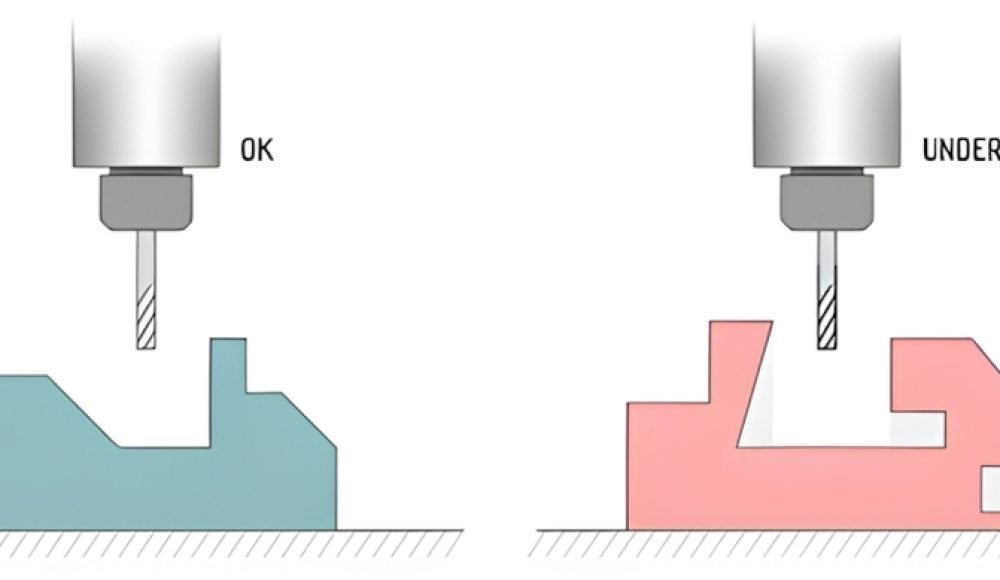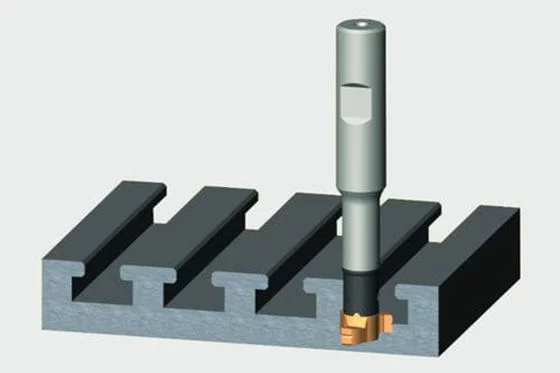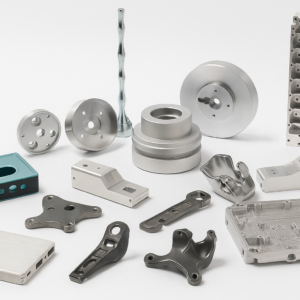Undercut machining is a specialized CNC process used to produce recessed features that are challenging—or impossible—to reach with standard milling tools. As modern product designs become more complex and compact, the demand for undercuts grows in industries such as aerospace, medico, e automobilistico. This article provides an in-depth look at undercut machining: what it is, perchè importa, how it’s done, the different types, and expert tips for success.
What Is Undercut Machining?
Undercut machining refers to the process of removing material beneath an overhanging section or from an area that is partially obstructed, making it inaccessible by conventional vertical tools. Traditional 3-axis mills struggle with these features due to geometric constraints, so machinists rely on specialized tools—like lollipop cutters and T-slot mills—and advanced Macchine CNC, Compreso 4- and 5-axis setups.
There are two primary categories:
Internal Undercuts – Recessed features within a component, such as grooves inside a gear hub or cavities in medical instruments.
External Undercuts – Visible indentations or recesses like those found in molded parts or locking mechanisms.
Why Are Undercuts Important?
Undercuts are essential in both functional and aesthetic aspects of part design. They serve several purposes:
Mechanical Functionality: Provide locking features or retention points in assembly designs without requiring fasteners.
Weight Reduction: Enable internal hollowing of components to reduce mass while maintaining structural integrity—critical in aerospace and motorsport applications.
Fluid Channels: Act as pathways for liquids or lubricants in hydraulic and pneumatic systems.
Improved Fit: Facilitate tight frictional fits or allow for movement, such as in spherical or threaded joints.
Despite their complexity, undercuts are sometimes the only way to meet specific performance or assembly requirements.
Step-by-Step Guide to the Undercut Machining Process
1. Look at the Design First (Evaluate the Geometry)
Before you even touch the machine, take a good look at your 3D model in CAD software. Chiediti:
Is the undercut on the inside or outside of the part?
Can the tool actually reach that area?
What angles will you need?
This will help you decide how to approach the job.
2. Pick the Right Tool for the Job (Select the Right Tool)
Different undercuts need different tools. Here are some common ones:
Lollipop cutters – Great for rounded or one-sided undercuts.
Dovetail cutters – Perfect for angled grooves.
T-slot cutters – Ideal for that classic “T” shape.
Keyway cutters or broaches – Used when you need to lock parts together with a key.
Choosing the right tool makes everything easier (and prevents broken bits).
3. Get the CNC Machine Ready (Prepare the CNC Setup)
Time to set up your machine. Here’s what to do:
If your part has tricky angles, UN 4- or 5-axis CNC machine will give you better access.
Load the CAM program with all the correct tool paths.
Make sure your part is held tight in the fixture so it won’t shift or vibrate during cutting.
Good prep = smooth machining.
4. Let the Machine Do Its Job (Machine the Undercut)
Una volta che tutto è impostato, hit go! Keep an eye on things:
Make sure chips (the little bits of metal that get cut away) are being cleared properly—especially in tight spots.
Watch for tool wear. Narrow areas and deep cuts can be hard on your cutter.
It’s okay to pause and check things if needed.
5. Check That Everything’s Right (Inspect and Verify)
After cutting, it’s time to double-check your work:
Use tools like a CMM, optical comparator, O profile projector to measure dimensions and surface quality.
If you’re working on something high-precision, you might need to do a finishing pass for a smoother surface.
Don’t skip this step—quality control saves time and money later!
Common Types of Undercuts in CNC Machining
-
One-Sided Undercut
🛠 Cos'è: A groove or cut on just one side of a part—like a notch that doesn’t go all the way through.
🔧 Tool used: Lollipop cutter (named because it looks like a lollipop!)
📦 Dove viene usato: Snap-fit connections, grooves for retaining rings, or any area needing a clean one-sided slot. -
Dovetail Undercut
🛠 Cos'è: A wedge-shaped cut that’s wider at the base—kind of like a trapezoid. It locks in a matching piece.
🔧 Tool used: Dovetail cutter
📦 Dove viene usato: Tooling setups, sliding joints, or even wood-style joints in metal parts. -
T-Slot Undercut
🛠 Cos'è: A “T”-shaped groove that allows bolts to slide and lock in.
🔧 Tool used: Cutter a toni T.
📦 Dove viene usato: CNC machine tables, modular assembly platforms—basically anywhere you need adjustable fixtures. -
Tapered Undercut
🛠 Cos'è: A groove that gets narrower as it goes—like a ramp or slope inside the part.
🔧 Tool used: Tapered end mill
📦 Dove viene usato: Self-locking fits parts that need to look sleek, or areas where a taper helps hold things in place. -
Spherical Undercut
🛠 Cos'è: A rounded, ball-like groove that curves inward.
🔧 Tool used: Ball-nose end mill
📦 Dove viene usato: Cuscinetti, ball joints, or any part that rotates smoothly and needs a round cavity. -
Threaded Undercut
🛠 Cos'è: An undercut that has threads inside for screwing things together.
🔧 Tool used: Thread mills or taps
📦 Dove viene usato: Pressure fittings, tight mechanical assemblies—especially when space is limited. -
O-Ring Groove
🛠 Cos'è: A circular groove made specifically to hold an O-ring (rubber gasket).
🔧 Tool used: O-ring groove cutter
📦 Dove viene usato: Hydraulic connectors, pompe, engine components—anywhere you need a tight, leak-free seal. -
Relief Undercut
🛠 Cos'è: A small recess added near rotating parts to reduce stress and friction.
🔧 Tool used: Slotting cutter or undercut end mill
📦 Dove viene usato: Cuscinetti, gear shafts, or rotating parts that need just a bit of clearance. -
Keyway Undercut
🛠 Cos'è: A slot cut into a shaft to hold a key that locks two rotating parts together.
🔧 Tool used: Keyway cutter or broach
📦 Dove viene usato: Motori, riduttori, or anything that transfers torque without slipping.
Specialized Tools for Undercut Machining
Lollipop Cutters: Ideal for spherical and hidden grooves.
T-Slot Cutters: Designed to mill both bottom and side of T-slots in one pass.
Dovetail Cutters: Angled blades match common dovetail profiles.
Keyway Broaches: Remove material linearly to create uniform slots.
Undercut End Mills: Versatile tools with side and bottom flutes.
Tips for Successful Undercut Machining
Avoid Deep Cuts: Design shallow undercuts to ensure tool access and reduce deflection.
Use Multi-Axis CNC: Enables better access angles and smoother paths.
Optimize CAM Paths: Minimize sudden changes in direction or depth.
Partner with Specialists: Shops with experience and tooling for undercuts improve part quality and reduce cost.
Progettazione per la produzione: Eliminate unnecessary undercuts during early design when possible.
Conclusione
Undercut machining is a high-precision, technically demanding process that enables engineers to incorporate complex features into parts where conventional tools fall short. Whether you’re creating locking mechanisms, optimizing fluid channels, or achieving lightweight performance, undercut features play a critical role in modern mechanical design.
Con gli strumenti giusti, tecniche, and CNC equipment, manufacturers can machine undercuts efficiently and repeatably. By understanding the nuances of tool selection, geometry analysis, and process planning, designers and machinists can push the boundaries of what’s possible in CNC machining.




